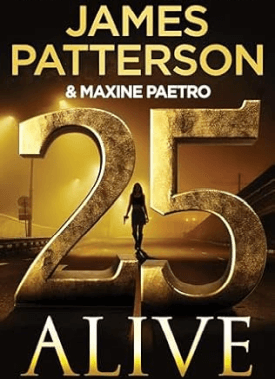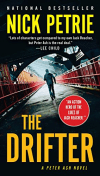Philip Marlowe Books In Order
Book links take you to Amazon. As an Amazon Associate I earn money from qualifying purchases.Publication Order of Philip Marlowe Books
| The Big Sleep | (1939) | Description / Buy at Amazon |
| Farewell, My Lovely | (1940) | Description / Buy at Amazon |
| The High Window | (1942) | Description / Buy at Amazon |
| The Lady in the Lake | (1943) | Description / Buy at Amazon |
| The Little Sister | (1949) | Description / Buy at Amazon |
| The Long Goodbye | (1953) | Description / Buy at Amazon |
| Playback | (1958) | Description / Buy at Amazon |
| Poodle Springs | (1989) | Description / Buy at Amazon |
| Perchance to Dream | (1991) | Description / Buy at Amazon |
| The Black-Eyed Blonde / Marlowe | (2014) | Description / Buy at Amazon |
| Only to Sleep | (2018) | Description / Buy at Amazon |
| The Goodbye Coast | (2022) | Description / Buy at Amazon |
| The Second Murderer | (2023) | Description / Buy at Amazon |
Publication Order of Philip Marlowe Collections
Philip Marlowe is a fictional private detective created by Raymond Chandler. The earliest appearance of Marlowe was in the short story Finger Man and the first novel to chronicle his adventures was The Big Sleep. Philip Marlowe is a classic sort of private eye, he is a wisecracking, tough, heavy drinking private eye. He does not shy away from the violent side of the job but does not use violence is a gratuitous manner. Despite his rough an tough demeanor is a cultured philosopher who enjoys chess and poetry.
Marlowe’s modest office is located in Los Angeles. He smokes and his drinks of choice are whiskey or brandy, which he consumes frequently and in large amounts. He also has a knack of using liquor to loosen the tongues of those he wants to pry information out of. Marlowe is portrayed wearing a fedora and a suit in most situations. He is truly the archetype of the genre.
The Big Sleep: Philip Marlowe takes over.
Published in 1939 this is the first novel to feature Philip Marlowe as the lead character. The novel itself has been ranked as one of the top 100 novels of the 20th century and has been praised for its complexity and the depths of the secrets that are revealed throughout the narrative.
The novel begins with Marlowe being called to the home of an elderly General, whose daughter has been the victim of a blackmail attempt. Things get more complicated when the investigation of the blackmailer leads Marlowe to the scene of a murder. This however is only the first layer of the story. The disappearance of the General’s older daughters husband, which was mentioned to Marlowe when he took the blackmailing case, soon becomes the focus of the story. The tale takes the reader on a wild adventure filled with double crossing characters and plot twists. It is a pioneer in the genre of detective stories and established Philip Marlowe as the top dog in the trade.
Anyone who has an interest in the crime/ mystery type of novel, must read the Big Sleep. It is an unavoidable masterpiece of modern literature.
Farewell, My Lovely: Another triumph for Marlowe
In this story Philip Marlowe gets tangled up in another twisting plot filled with memorable characters. As the novel begins, Marlowe is investigating a dead-end case. He sees a known felon barge into a nightclub, where he proceeds to kill the club manager. The felon gets away and another detective is given the case. Marlowe decides to help out the detective by giving him advice. Nulty, the detective assigned to the case ignores the advice so Marlowe decides to take it upon himself to solve the murder and catch the killer.
Once more the novel takes the reader to many different locales. Some of these are shady places with incredible characters who are once more out to save themselves and let the authorities sift through the information and clues and come up with the killer. Which will, of course, fall in the lap of Philip Marlowe in the end.
Much like the first novel, the initial plot leads to a more complex story. The initial elements are just a means to an end. They allow the story to begin but are not what you are thinking about when the story is over.
Cannibal
What gives these stories their depth is the way in which they were produced. Chandler used a technique he called cannibalizing in order to create them. What this means is that he took the ideas from several short stories and adjusted them in order to fit them into one, coherent tale. Basically you are taking several different premises and plot lines and coaxing a linear story out of them. This explains the plot twists as the stories are not following a single plot, but rather several that are tweaked in order to fit together.
Movies Ext.
Many of the Philip Marlowe stories have been made into feature films and television shows. The ironic thing is that the first film based on a Marlowe story did not even star the private detective. In 1942 a film version of Farewell, My Lovely was developed. It was released under the title The Falcon Takes Over. The Falcon was an established film detective and, at the time, Philip Marlowe was unknown, so The Falcon got the part.
The iconic character finally gained film notoriety in 1946 when Humphrey Bogart was named to play Philip Marlowe in the film version of The Big Sleep. The film was a great success and has been added to the United States National Film Registry for its cultural, historical and aesthetic significance. This film along with the Farewell, My Lovely were remade in the 1970’s, a tribute to the lasting importance of Marlowe as a character.
Marlowe has also been the subject of numerous television programs. He first appeared in 1959 in a half hour series for the American Broadcasting Company. (ABC) This was a short lived attempt and only lasted one season. In the early 1980’s Philip Marlowe reemerged in a British mystery series that aired on HBO in the U.S. It encompassed a total of 11 episodes was popular both with critics and the general public
Philip Marlowe’s popularity however was not only limited to the written and visual medium. His stories were very popular radio programs in the late 40’s. In fact by 1949 it had the largest radio following of any program on air. A total of 114 radio episodes were produced for CBS radio.
Philip Marlowe is the quintessential detective. Whenever you see a detective wearing a fedora, in a suit with his pants held up by suspenders, you are seeing Philip Marlowe. When a detective grabs a bottle of whiskey and pours himself a large glass or two while struggling to piece clues together, you are seeing Philip Marlowe. When the mystery seems utterly unsolvable, but the detective remembers a small piece of evidence that seemed insignificant but ends up being the key element to solving the mystery, you are seeing Philip Marlowe. Many have tried to imitate, but few have succeeded. If you want to get to the true nature of classic crime fiction, do yourself a failure and read some Philip Marlowe novels.
Book Series In Order » Characters »


 Any issues with the book list you are seeing? Or is there an author or series we don’t have? Let me know!
Any issues with the book list you are seeing? Or is there an author or series we don’t have? Let me know!
One really neat thing about Raymond Chandler was that he changed the names of many of the cities and streets, businessmen and buildings in his stories, but you could tell they were real places in Los Angeles and surrounding cities. I found a map (a single sheet of paper that folds like a gas station map) with key places from the various Marlowe books on Amazon (To echo my uncle, I call it “The Getting Place.”
It mentions places from the Lido Pier where Owen Taylor met his end in “The Big Sleep”, to Bay City, transparently Santa Monica, The Dancers night club on the Sunset Strip, The Ritz Beverly Hills Hotel, Musso’s and Franks Grill, and the Fulwider and Treloar buildings downtown.
It’s called, “the Raymond Chandler Map of Los Angeles by Kim Cooper and Paul Rogers.
Very interesting discussion of Philip Marlowe and how he really created the concept of the hard-boiled detective over the last 80 years.
One small quibble. The title of the novel is “Farewell, My Lovely. In two places in the section, Movies Ext. it’s “Farewell MyLady.
I hope this doesn’t appear as a comment anywhere, I don’t mean it in any critical way, I thought your last paragraph was 100% on target about later detectives, most especially, I think, the series by Mickey Spillane. And Calvin and Hobbes.